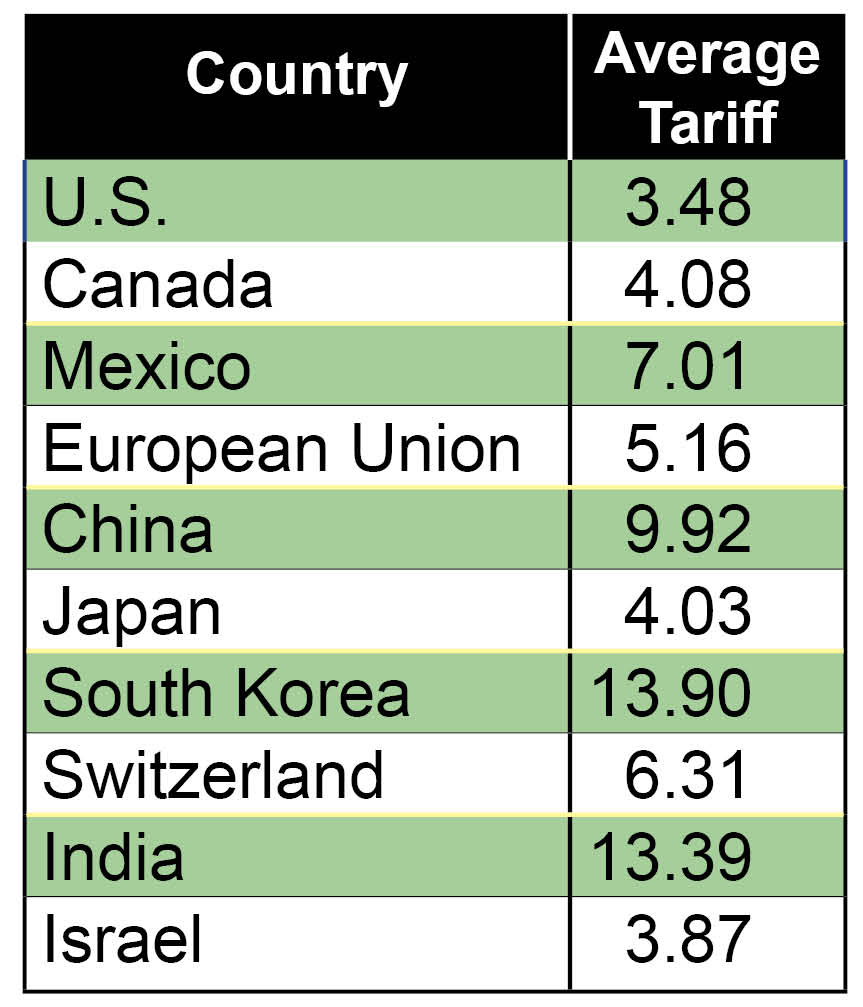U.S. Commerce Secretary Wilbur Ross recently said that trade negotiations will continue even if newly imposed U.S. tariffs are in place. Then he added, “God knows, there are plenty of tariffs the EU has on us.”
President Trump echoed that complaint in a recent tweet: “If we charge a country ZERO to sell their goods, and they charge us 25, 50 or even 100 percent to sell ours, it is UNFAIR and can no longer be tolerated. That is not Free or Fair Trade, it is Stupid Trade!”
[Note: We don’t actually “charge a country” to sell their products in the U.S.; a tariff is a tax the U.S. government imposes on U.S. residents if they buy a foreign product.]
Both men have a point. According to the World Trade Organization (WTO), the U.S. imposes, on average, lower tariffs than our closest trading partners. The WTO’s interactive map highlights the “simple average applied MFN tariff” (Most Favored Nation) of various countries. Here are some examples:

A few countries have lower average tariffs: Australia is 2.52 and New Zealand 2.04. Singapore and China-controlled Hong Kong are virtually zero. But our major trading partners are higher, and in some cases significantly higher.
One reason for developing a WTO-type averaging is tariffs are so varied and complicated. Pointing to one or two specific tariffs can obscure the bigger picture.
For example, President Trump complains about the EU’s 10 percent tariff on U.S.-made cars, while the U.S. imposes a 2.5 percent tariff on foreign-made cars. But Trump never mentions the 25 percent tariff the U.S. imposes of foreign-made light trucks. And yet Americans buy twice as many trucks as cars, magnifying the impact of the 25 percent foreign-made truck tariff.
While a case can be made that having a vibrant domestic steel and aluminum industry is in our security interest—though not a very strong case when we’re talking about Canada, Mexico and the EU—Ross’s recent revelation that he thinks it’s a security interest that Americans drive a Ford rather than a Kia or a BMW is ludicrous.
Even so, the president and Ross have a point—our trading partners tend to impose higher tariffs than the U.S. does. But the solution is to highlight valid concerns and press our trading partners to lower their tariffs through the proper channels, which is what our trading partners are now doing to the U.S.
